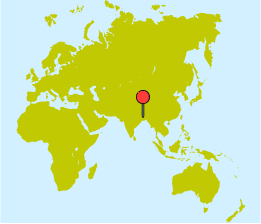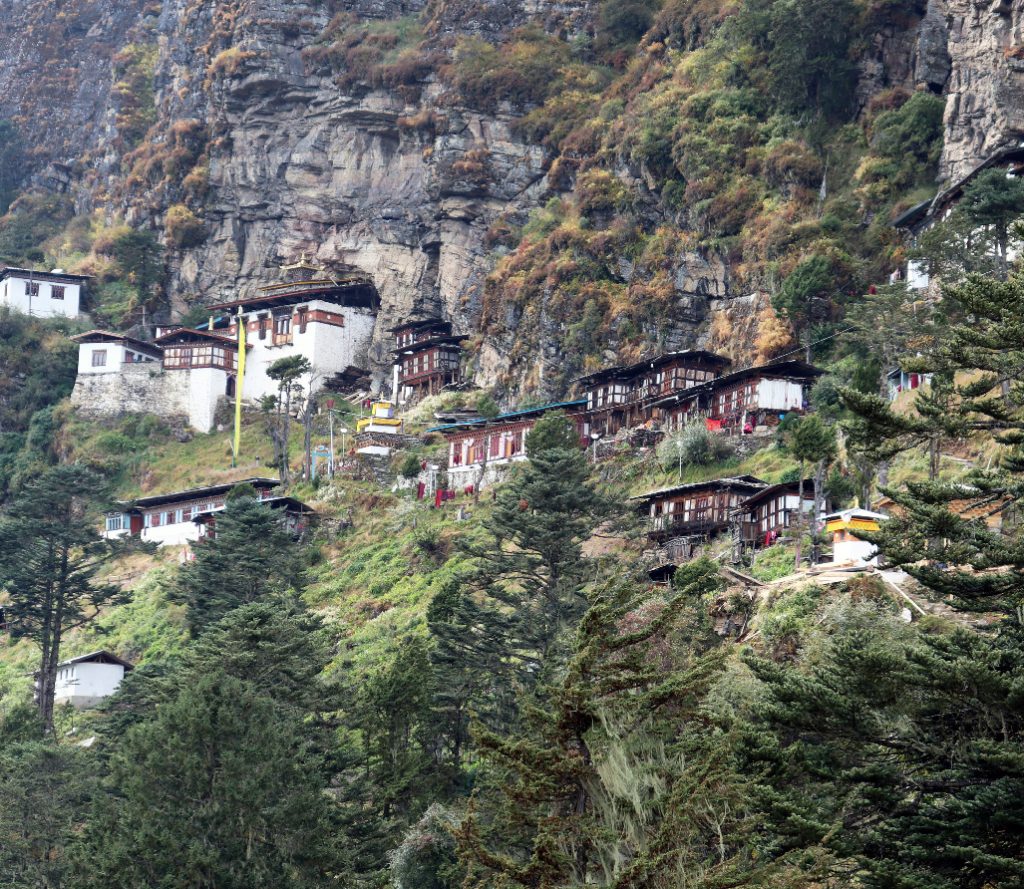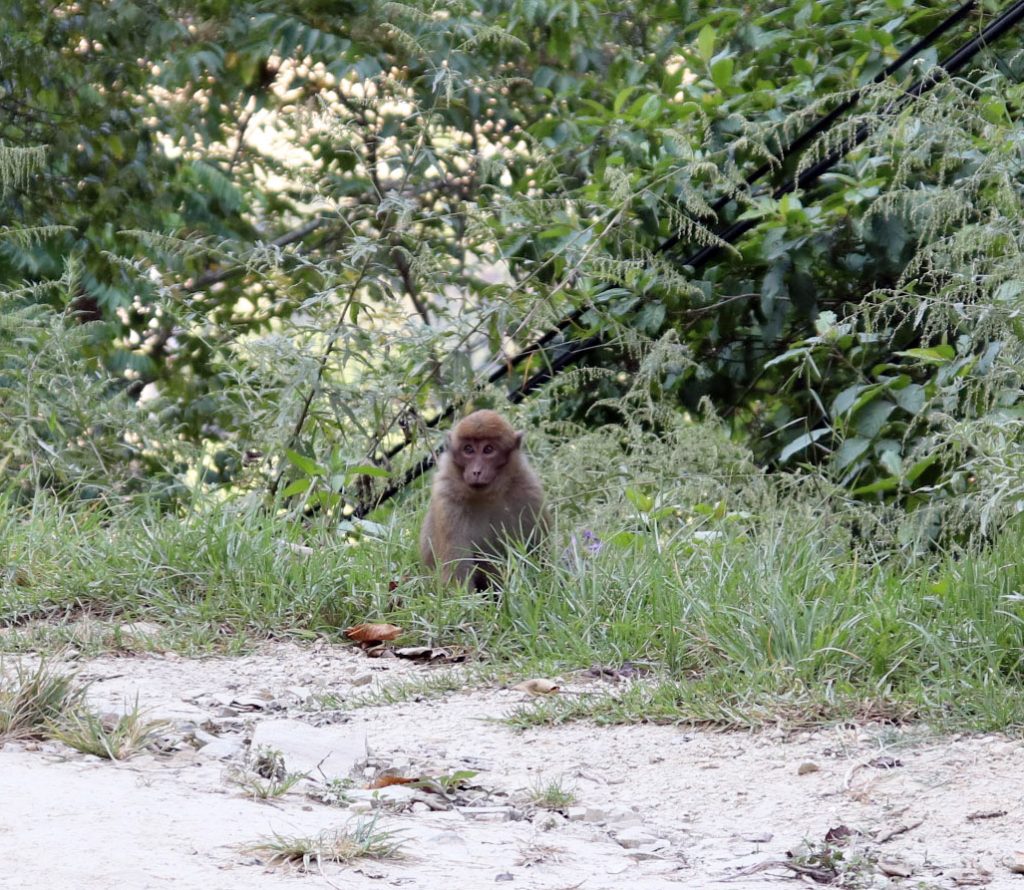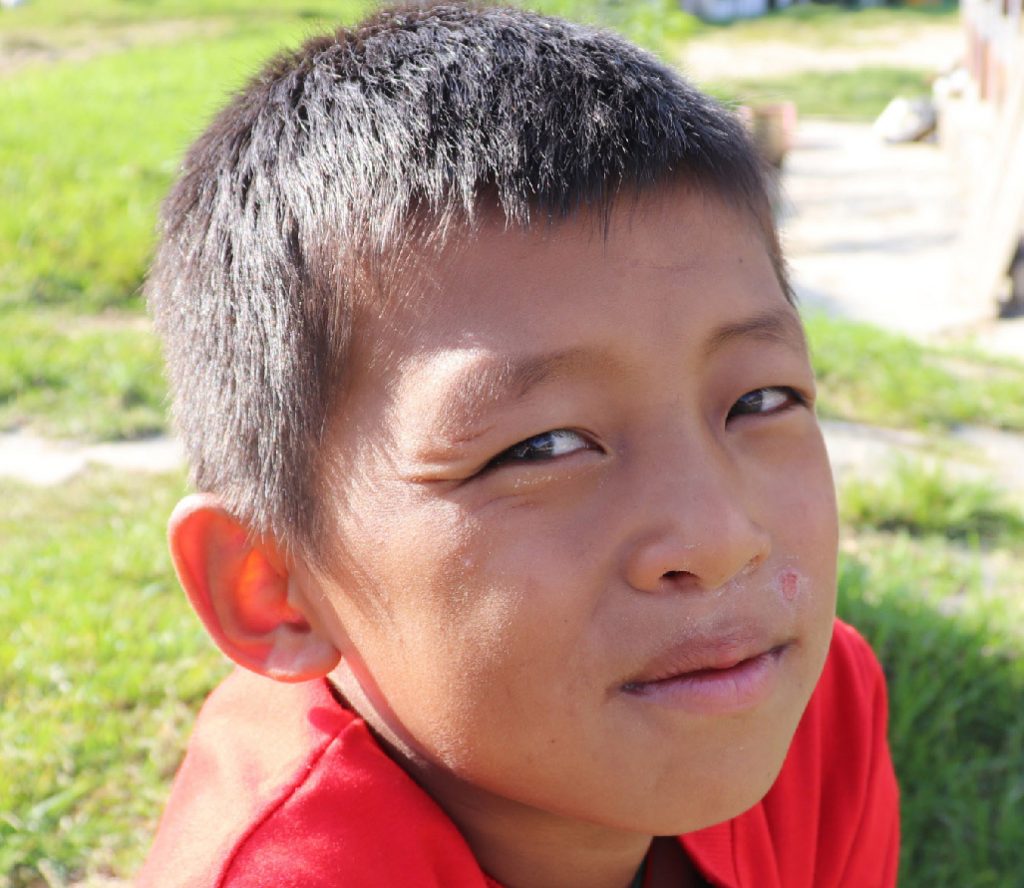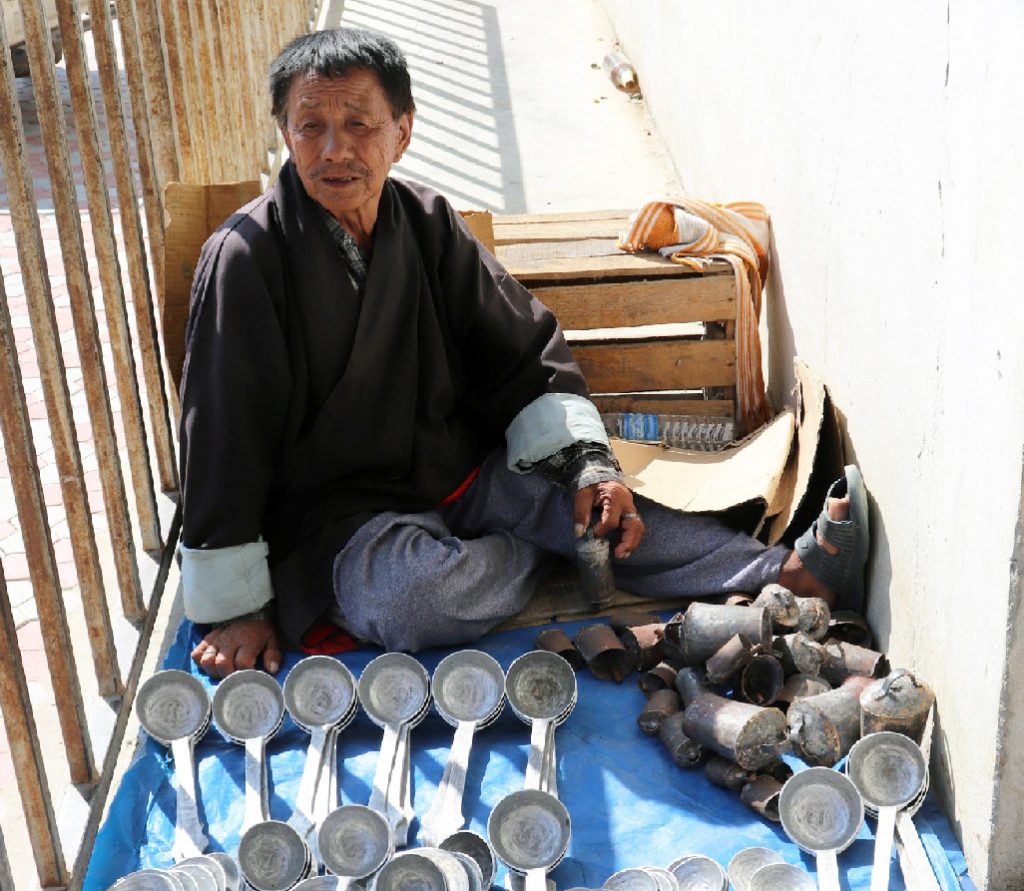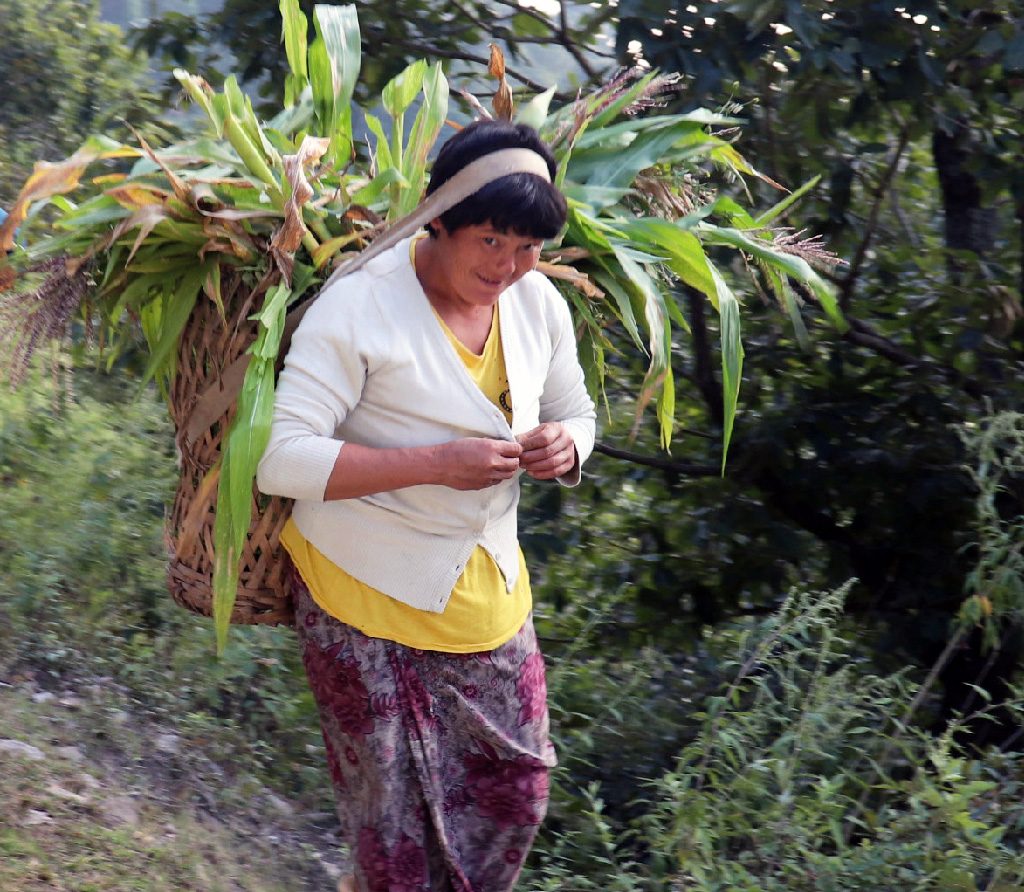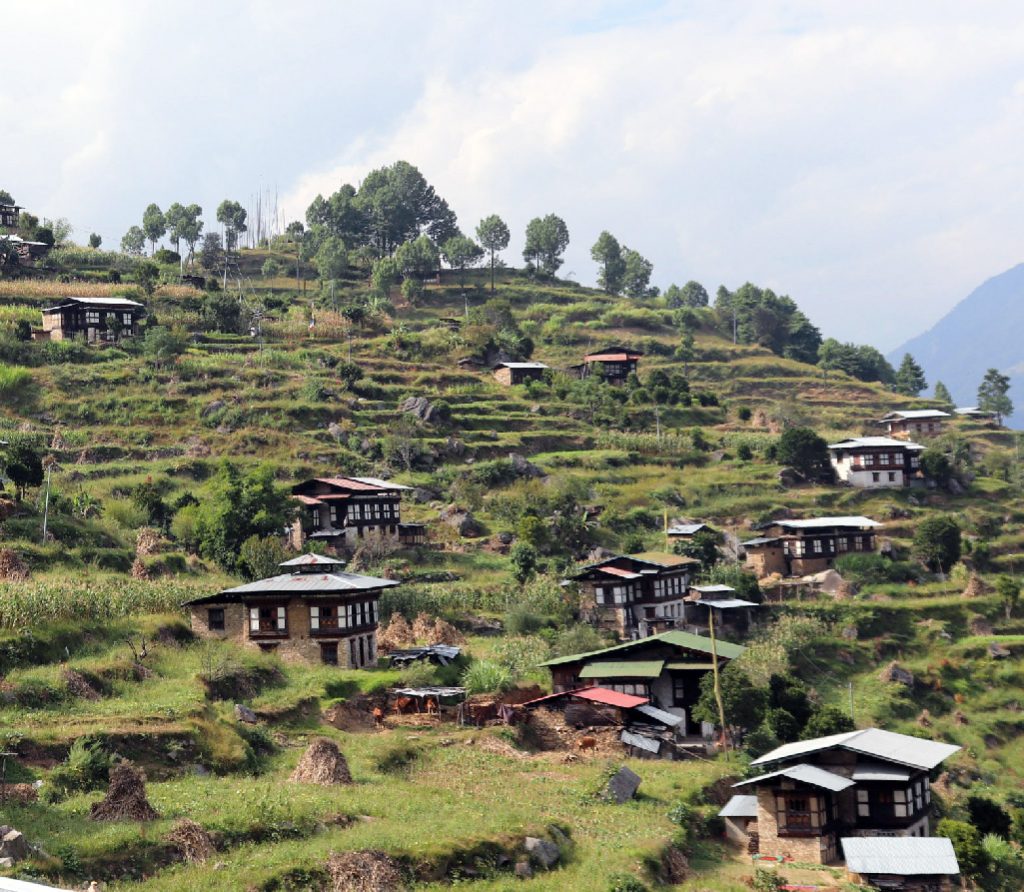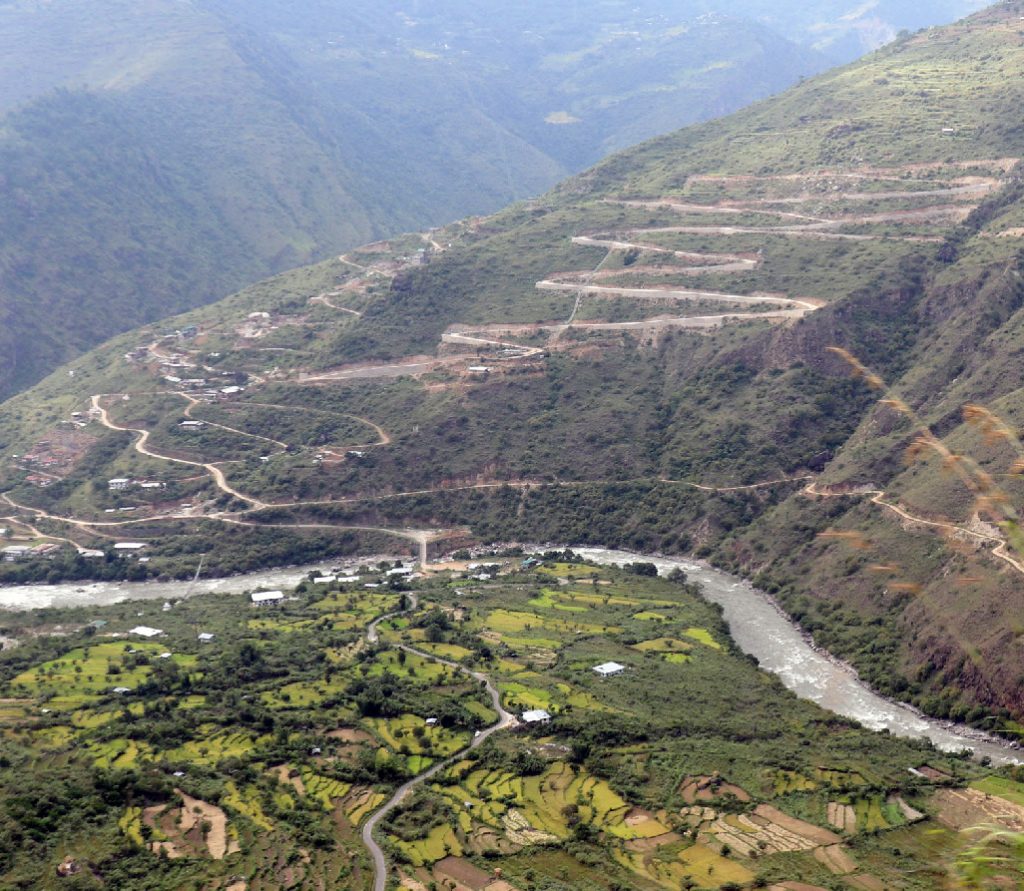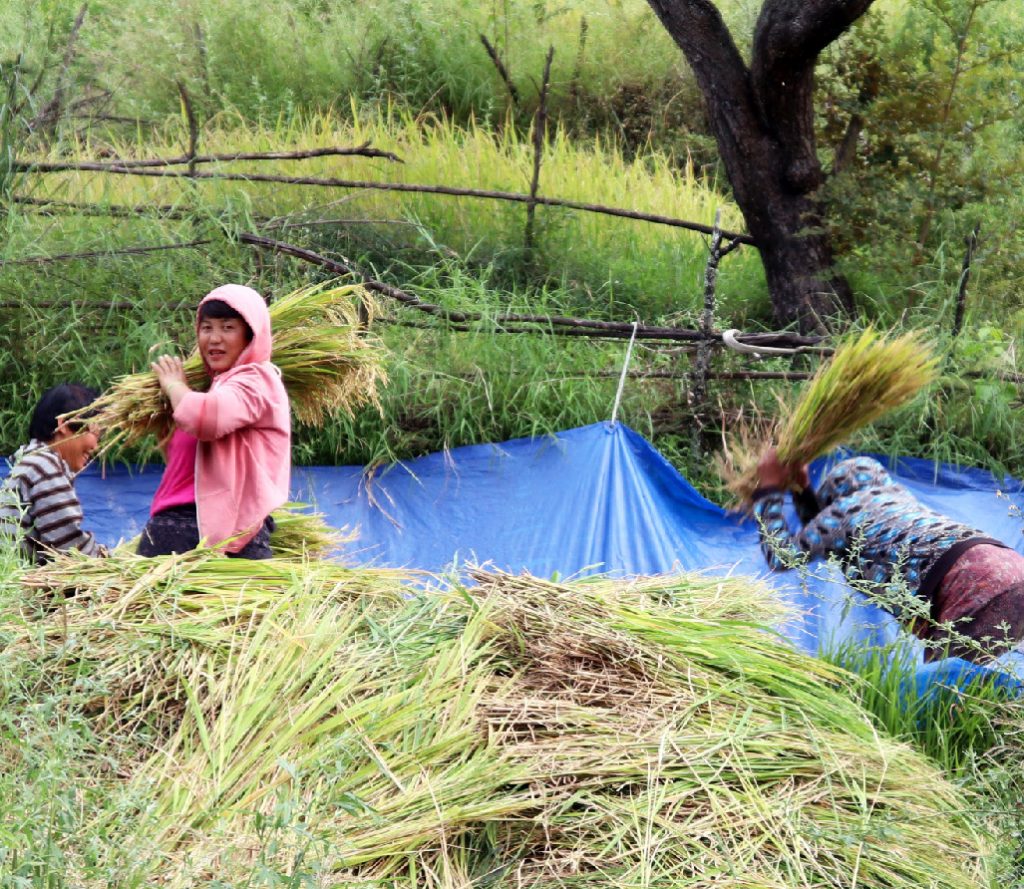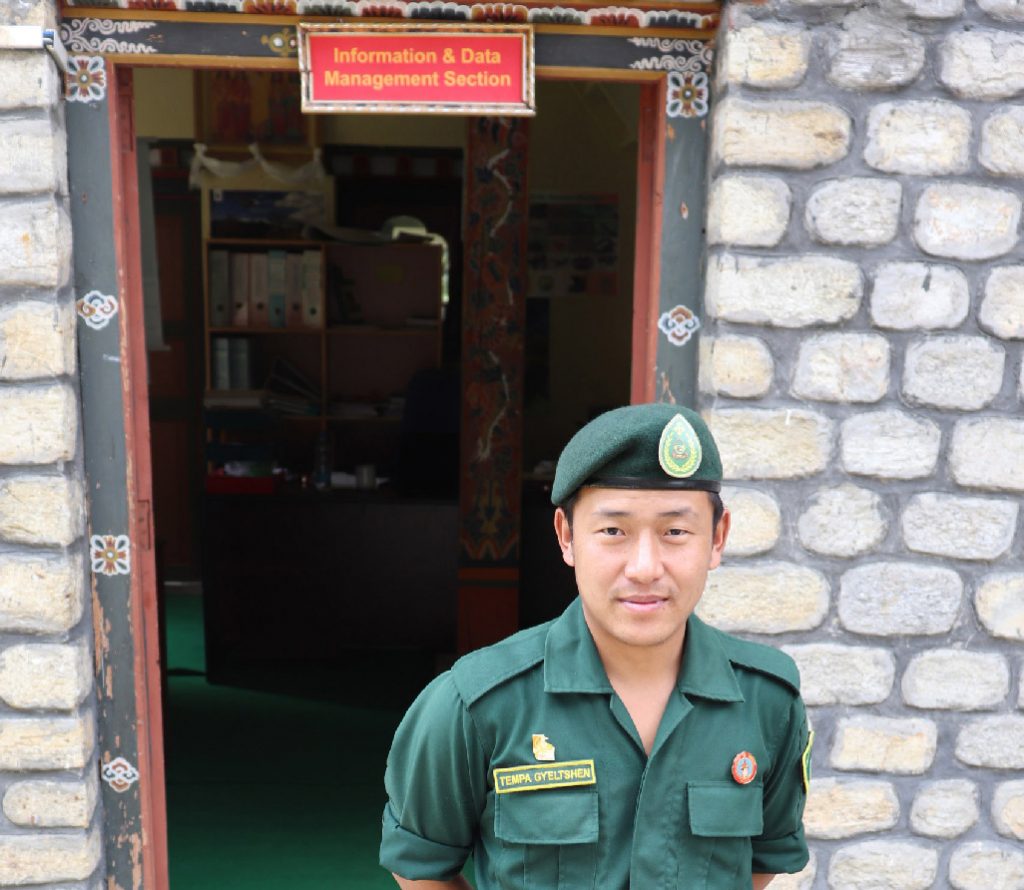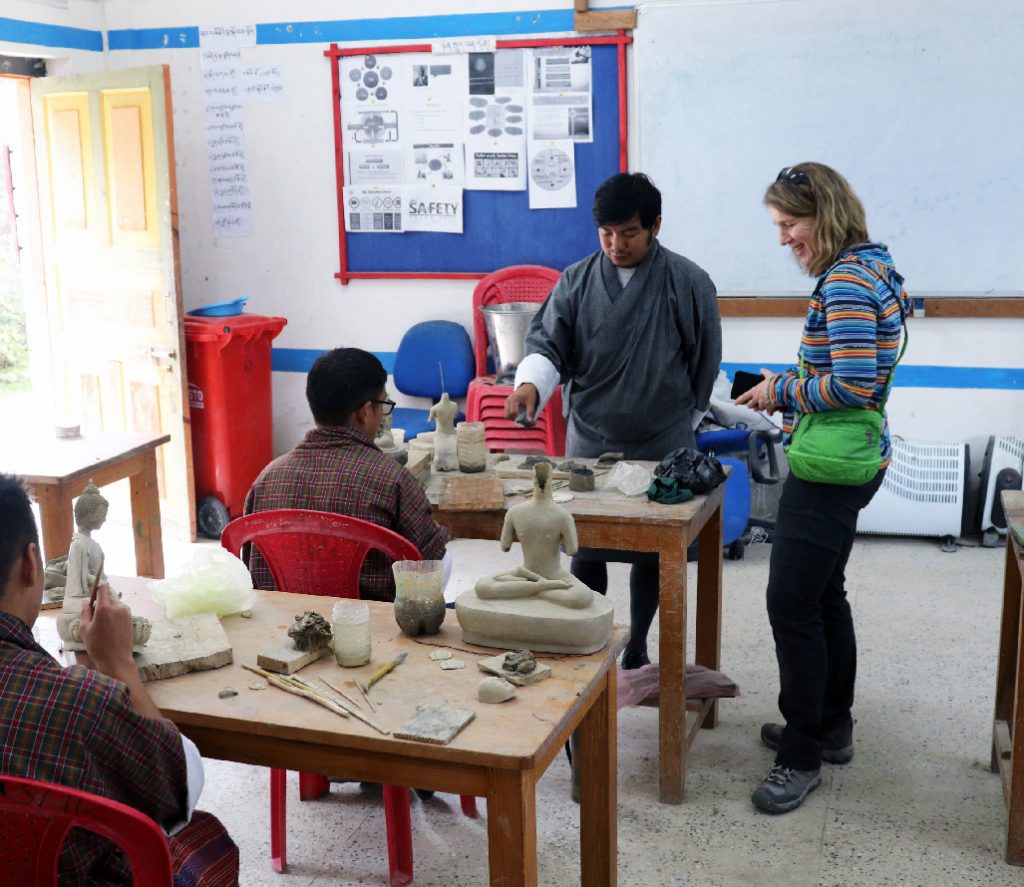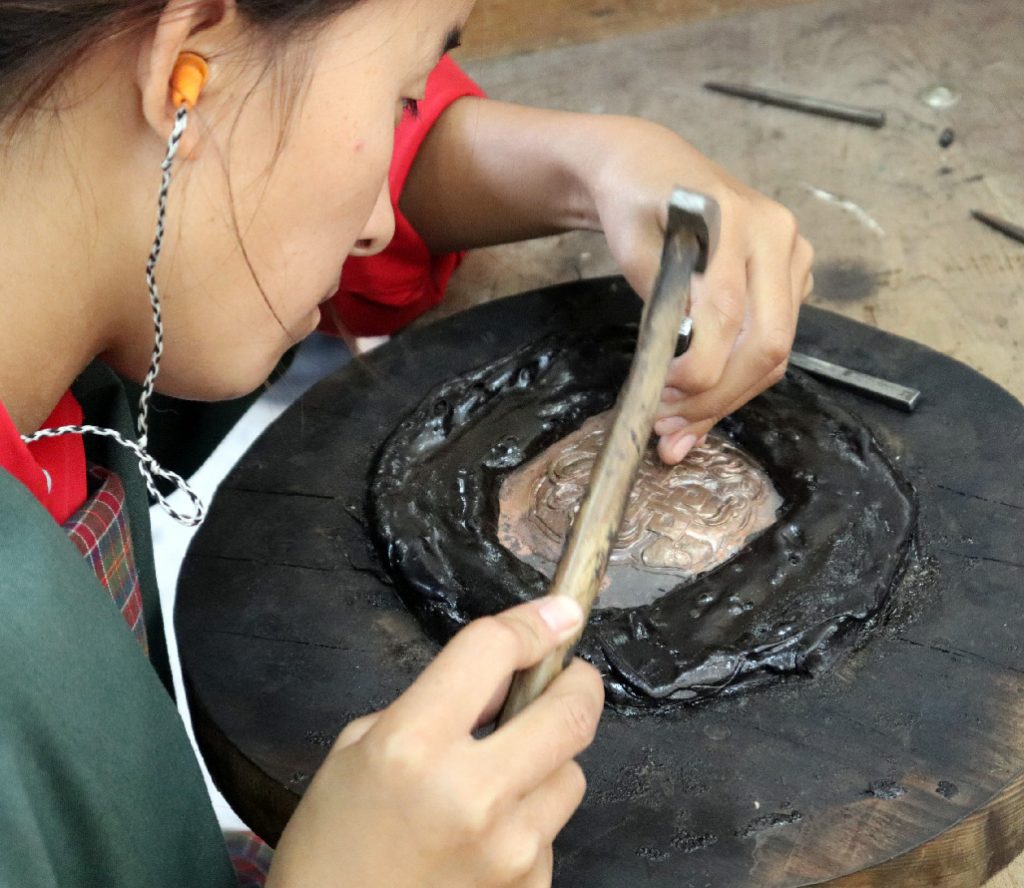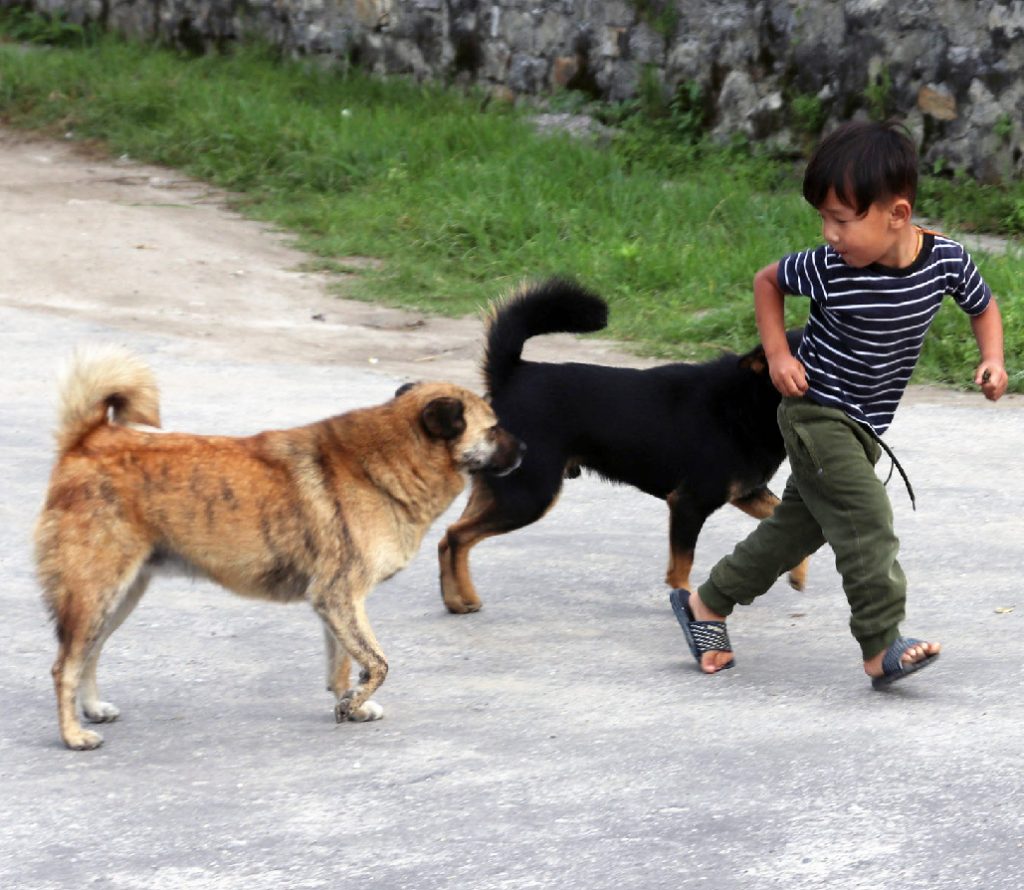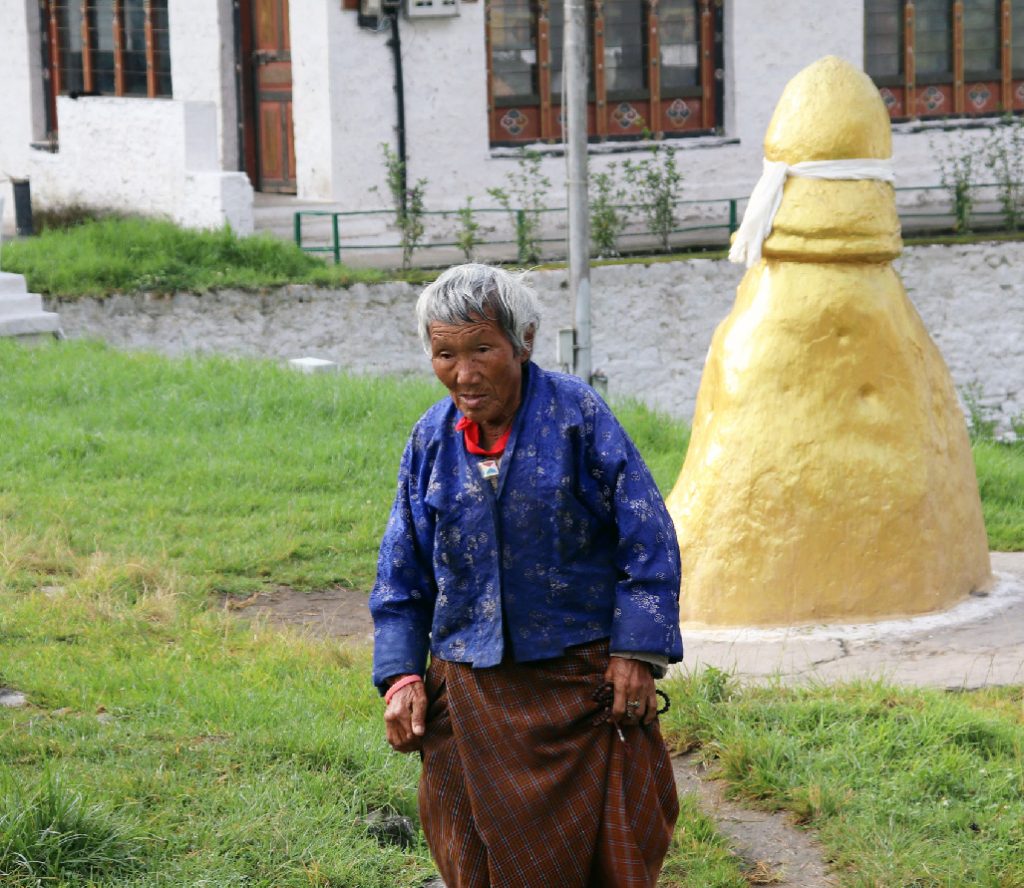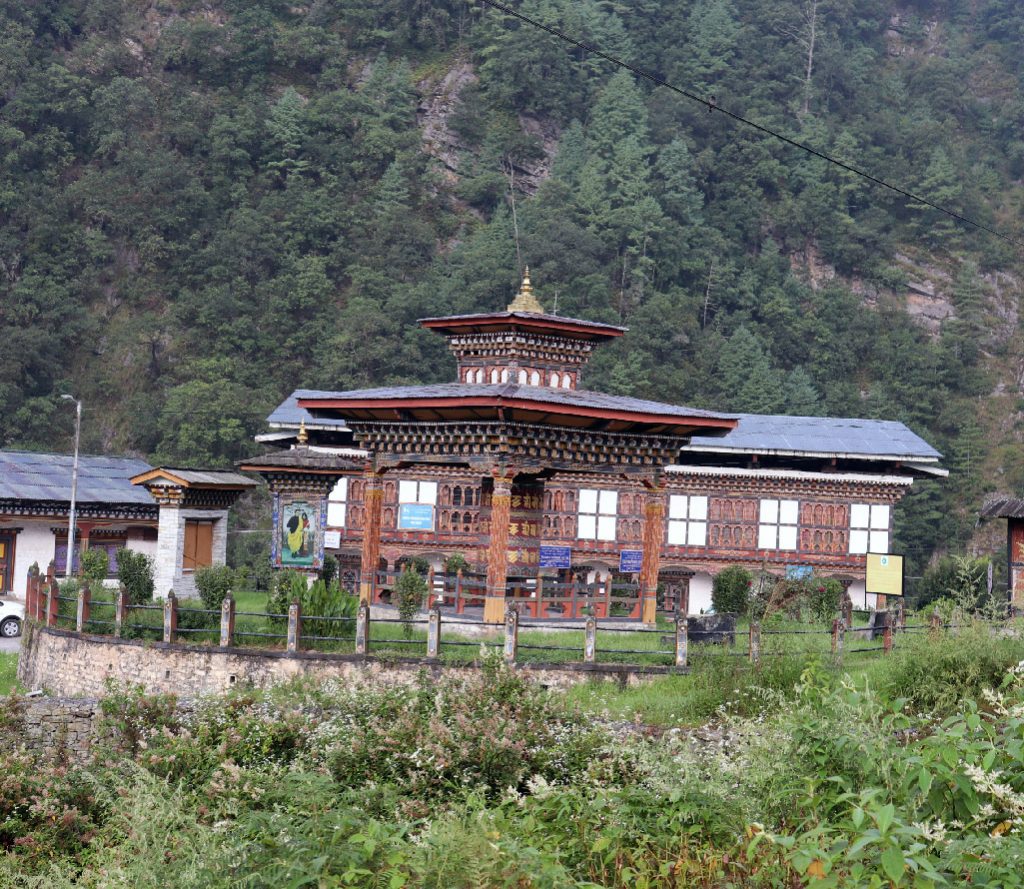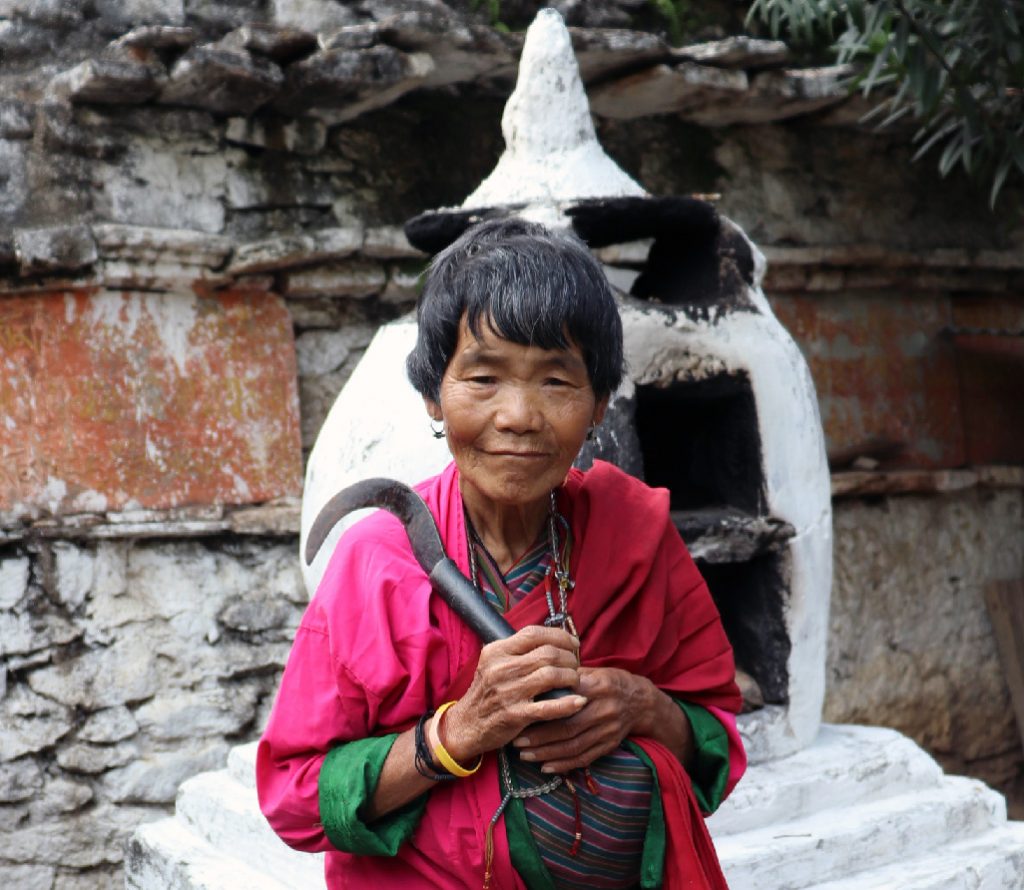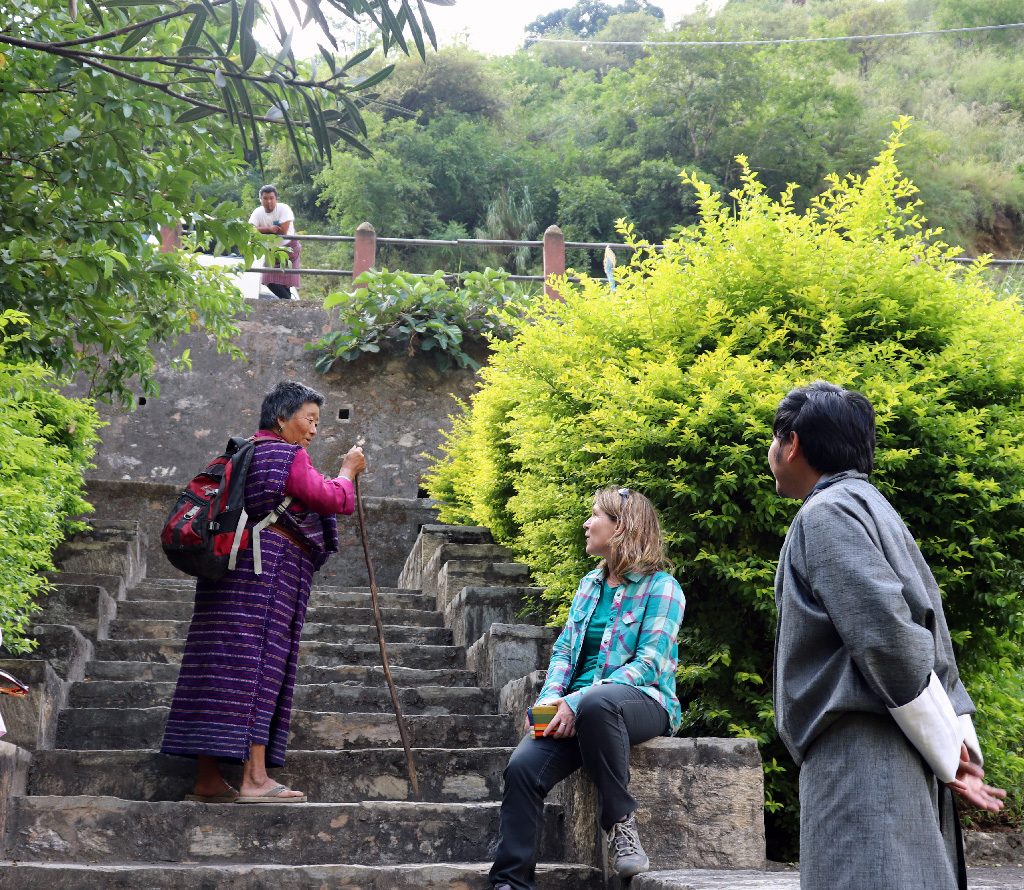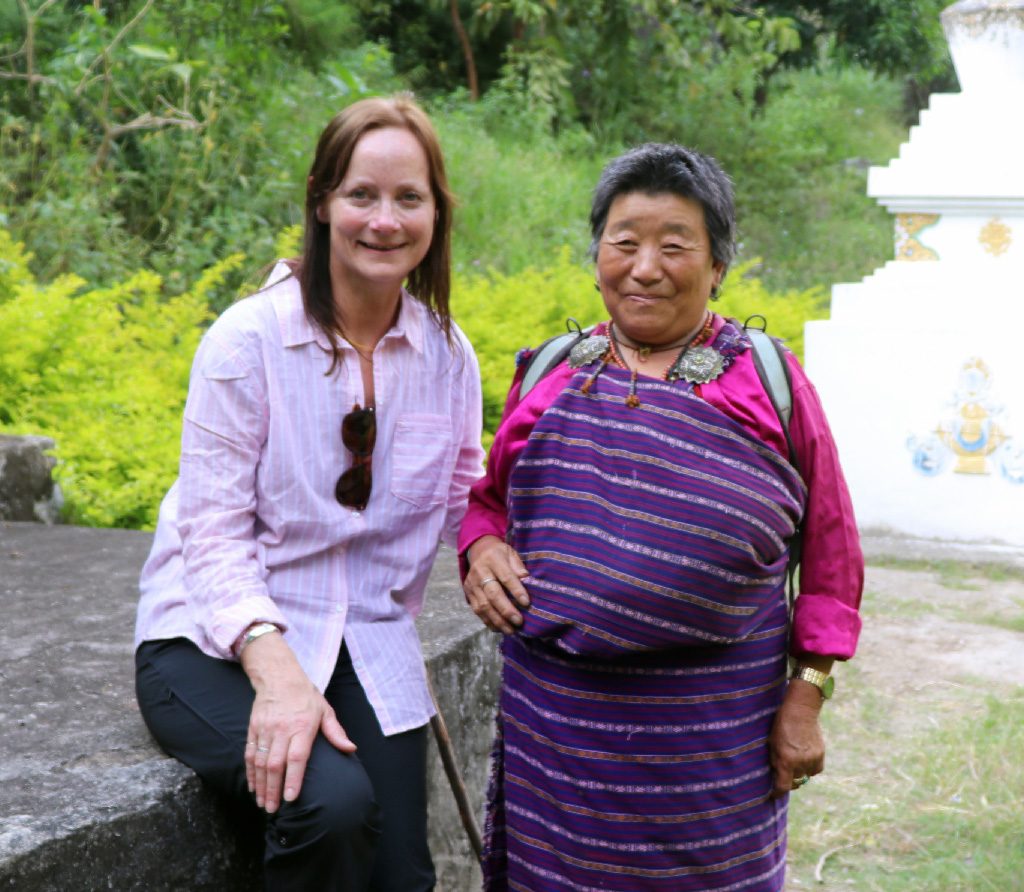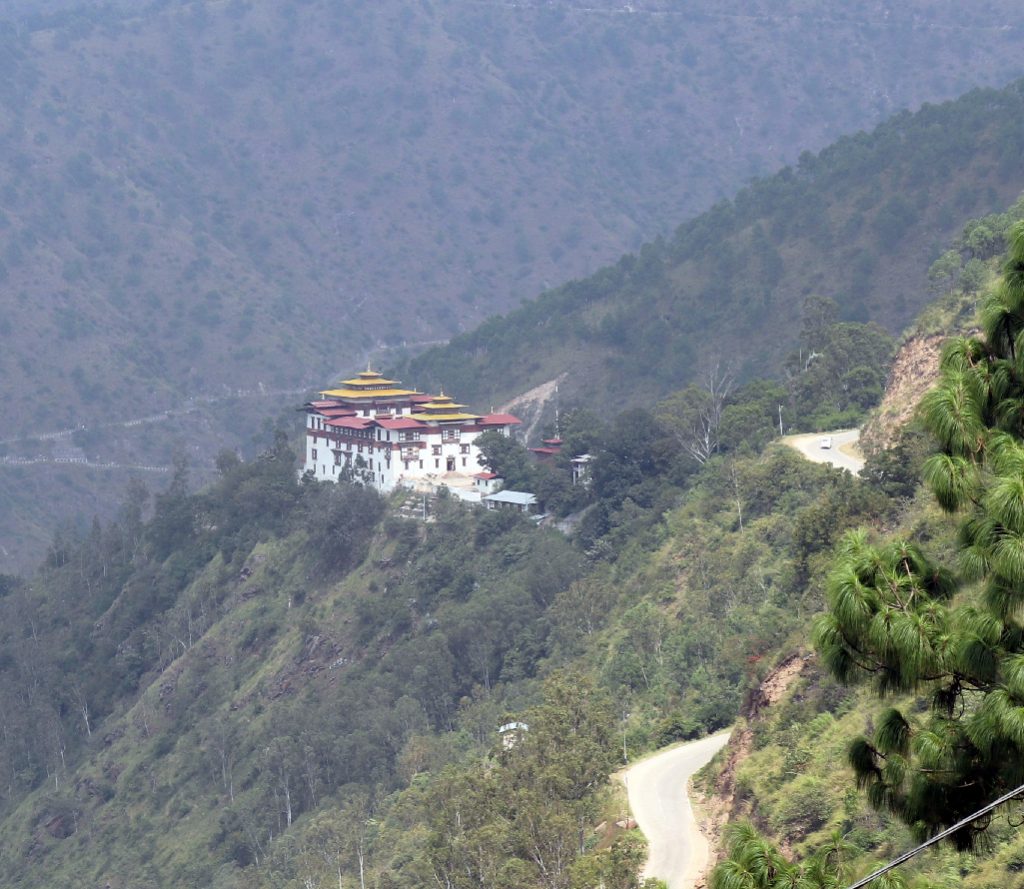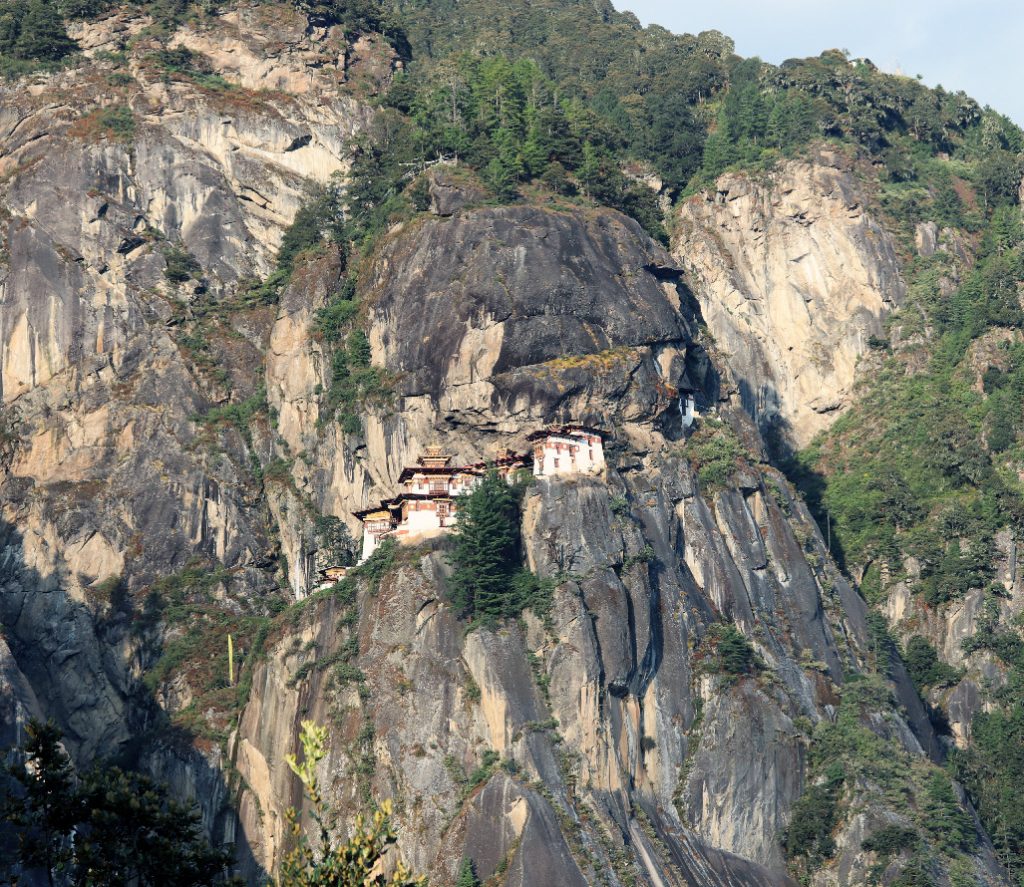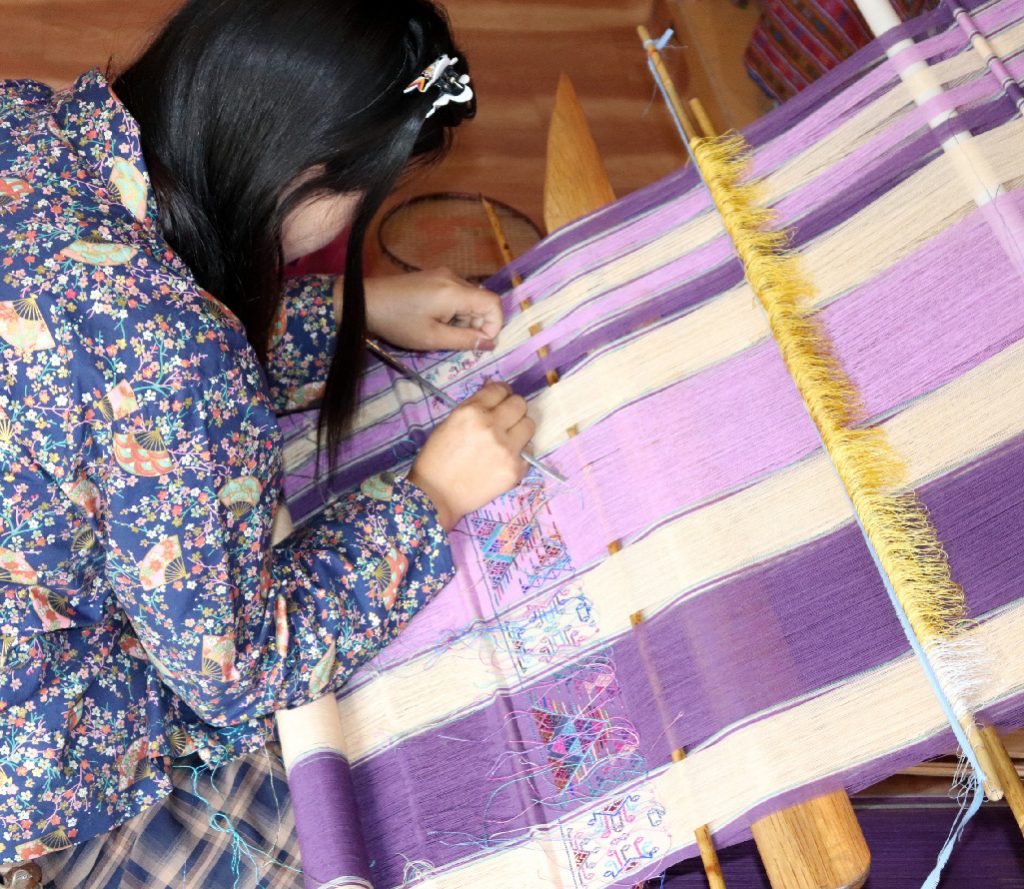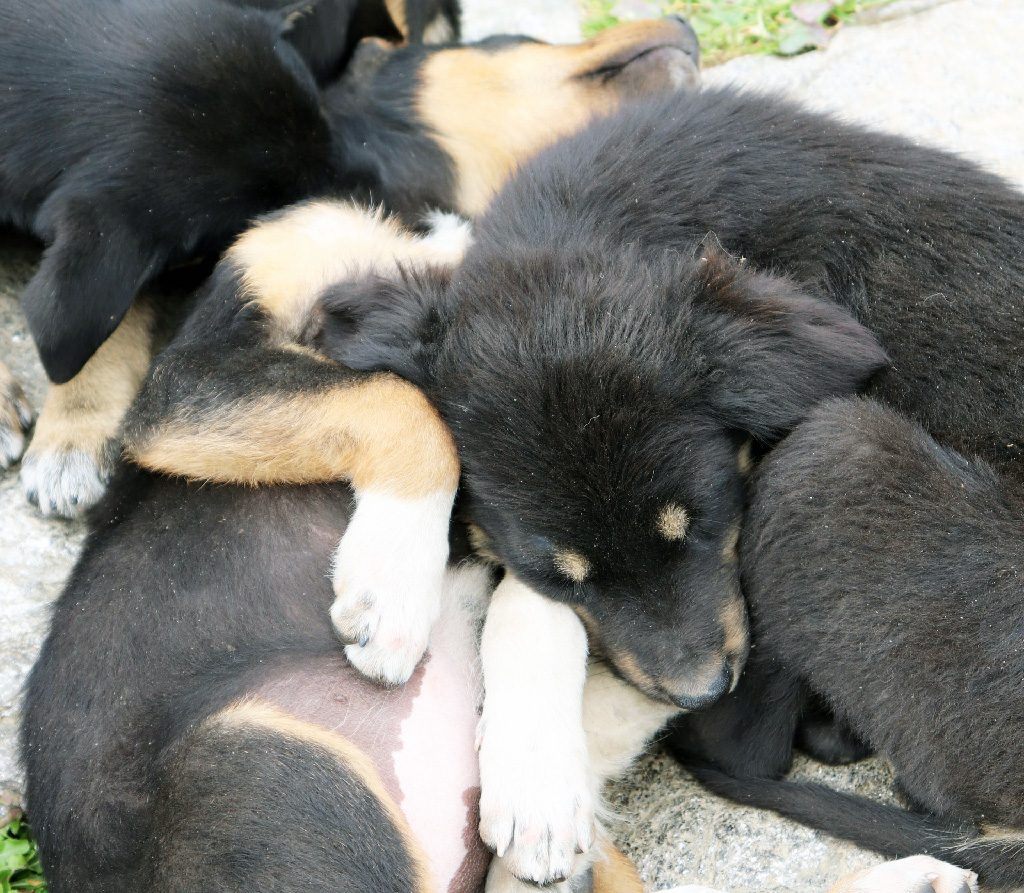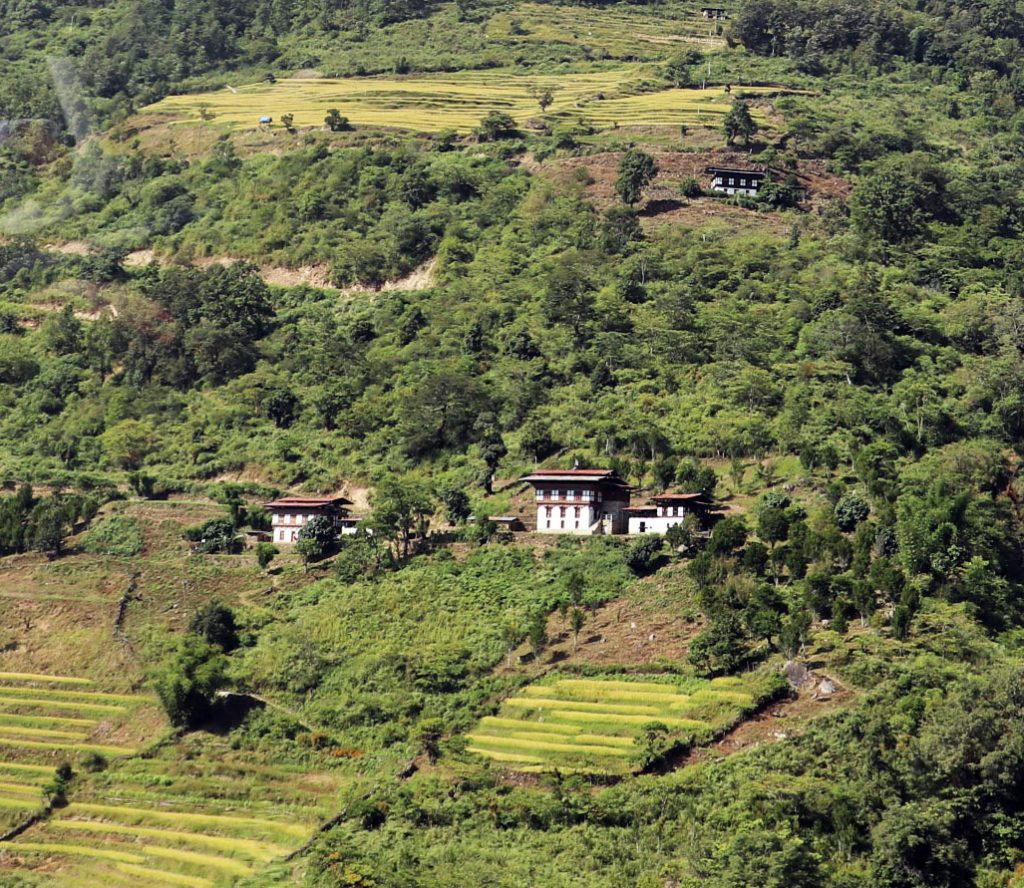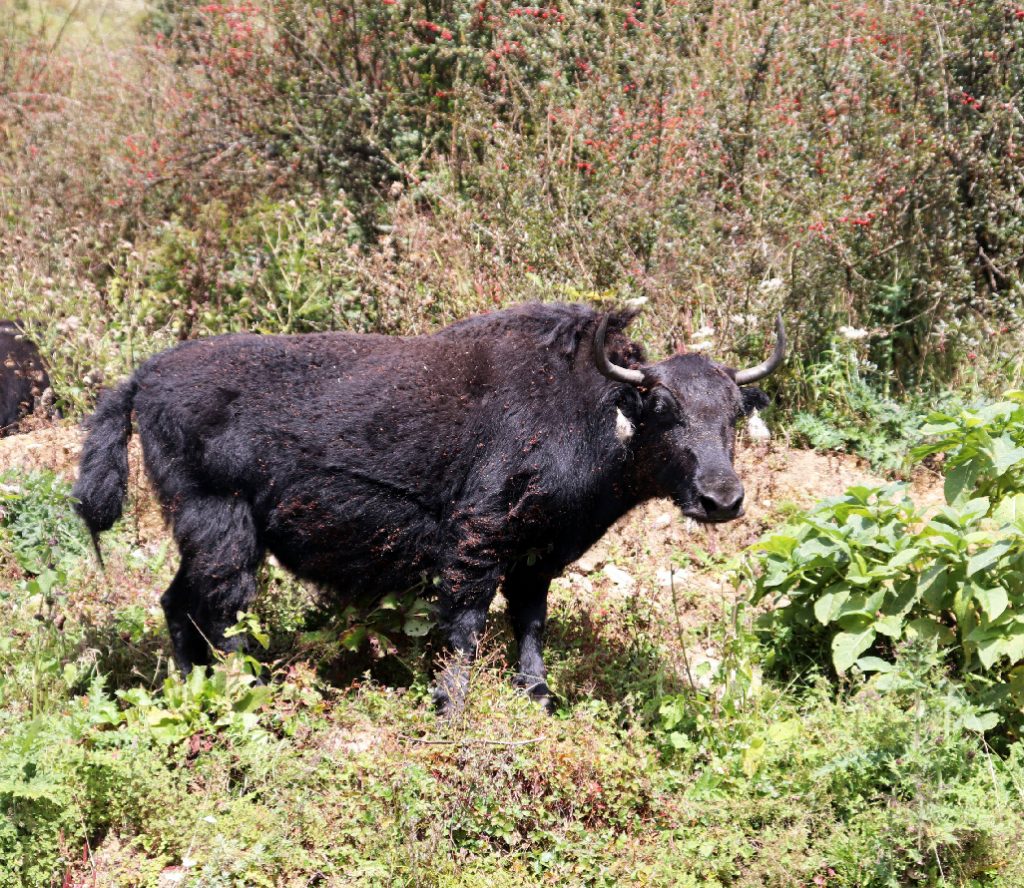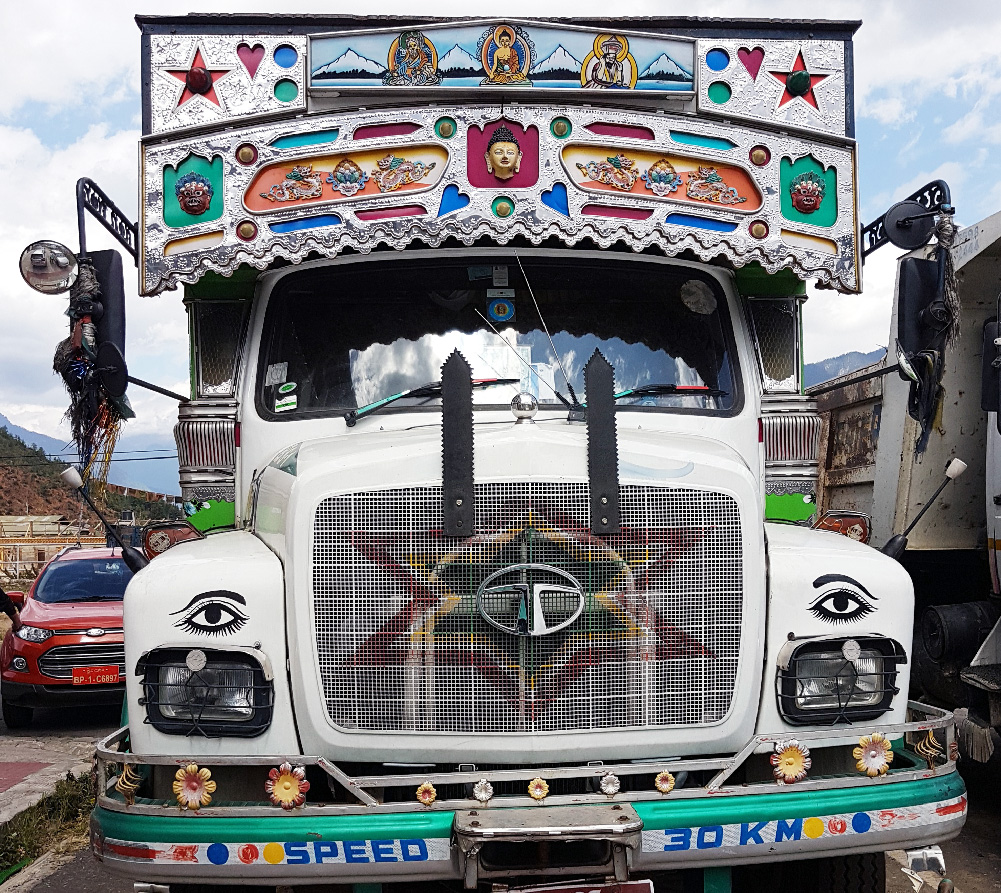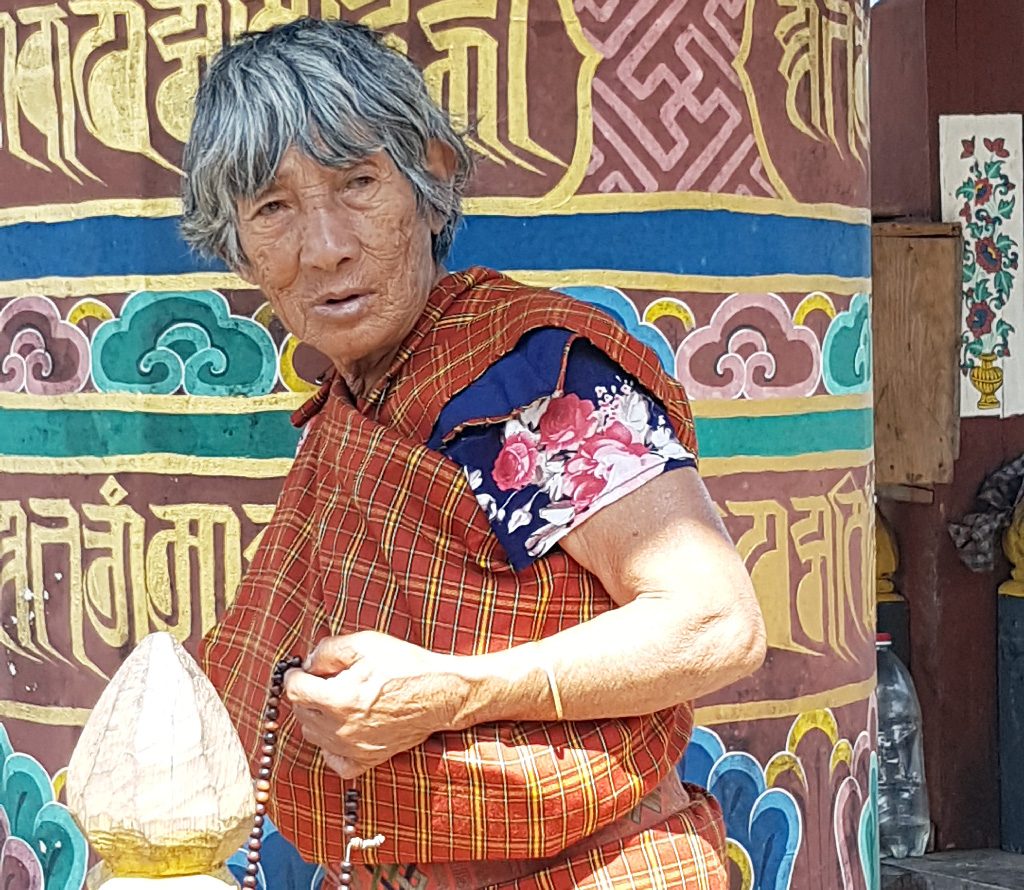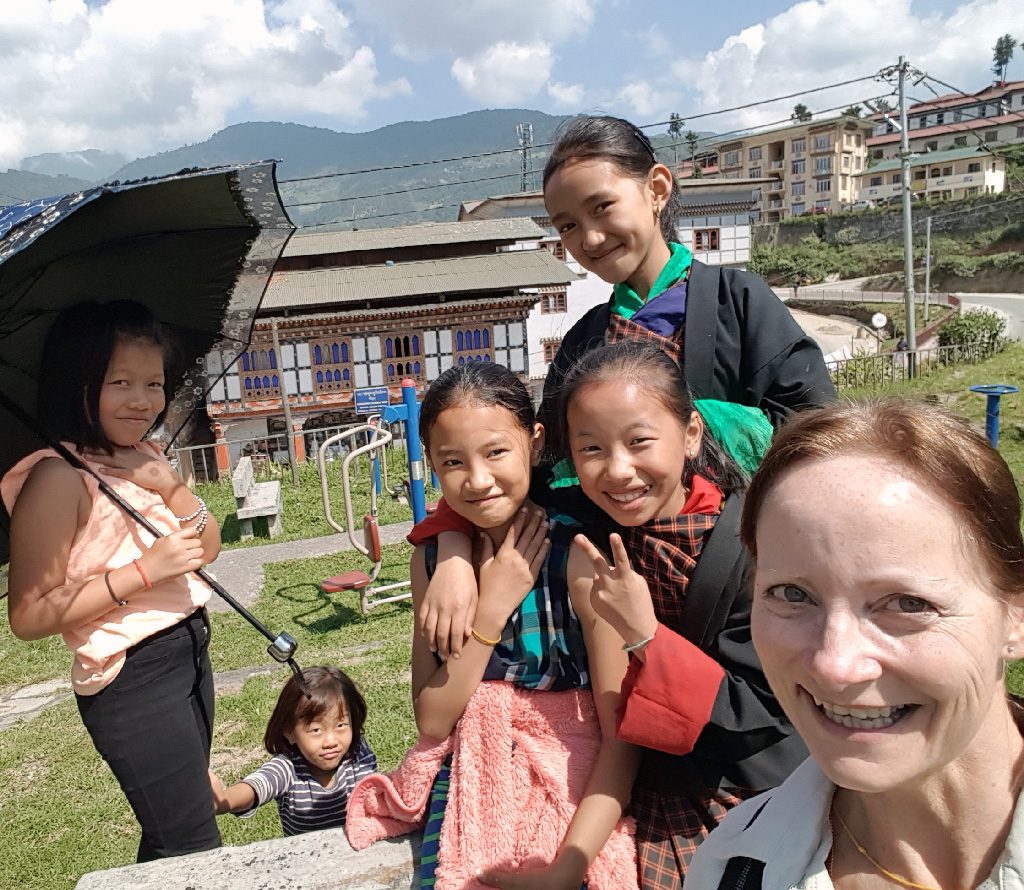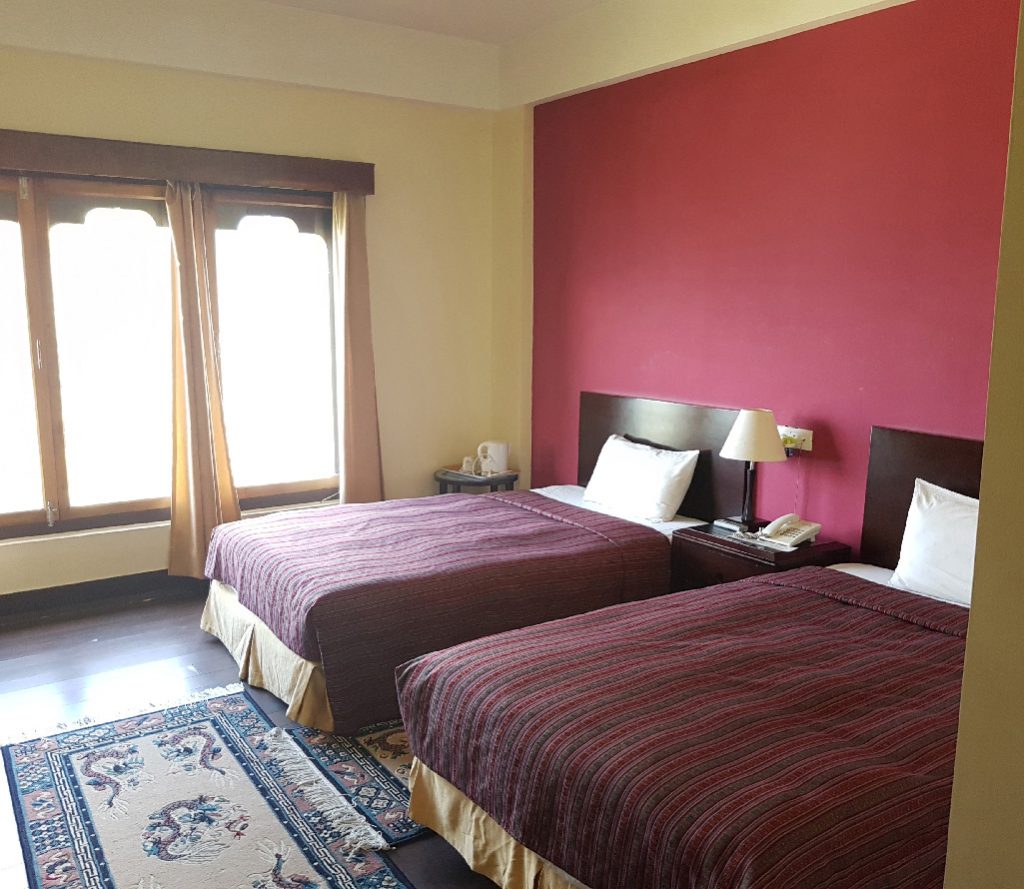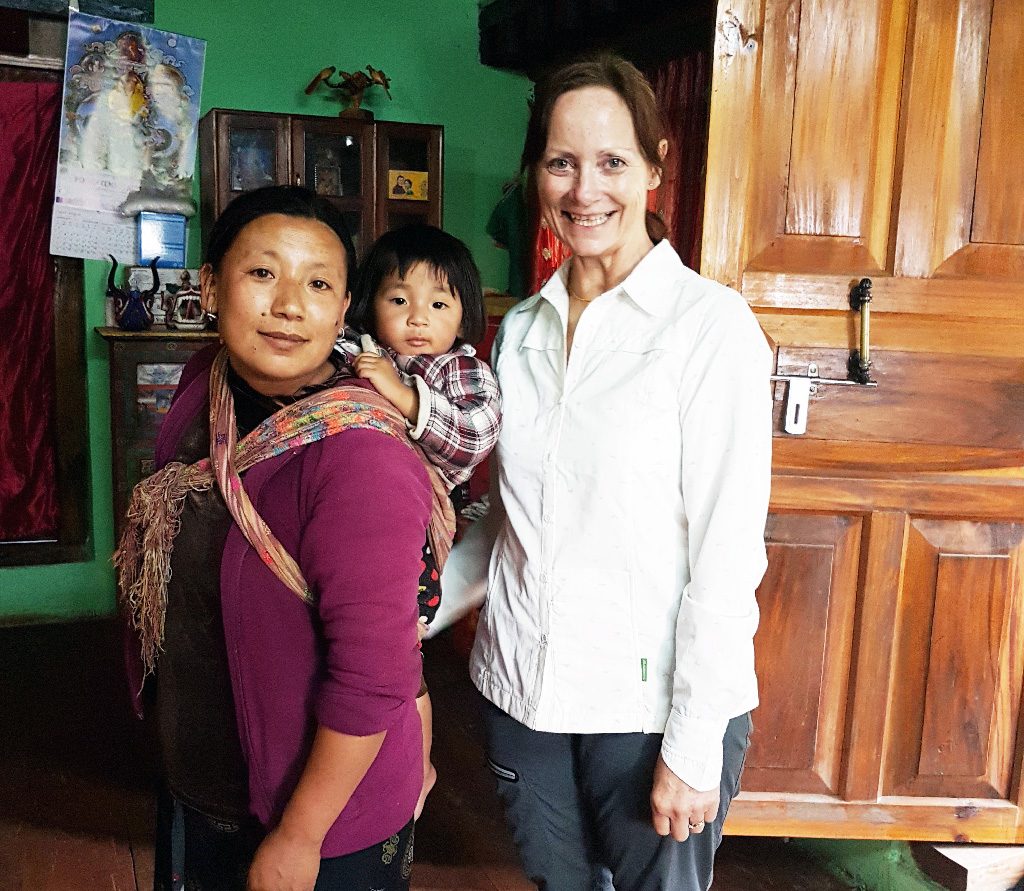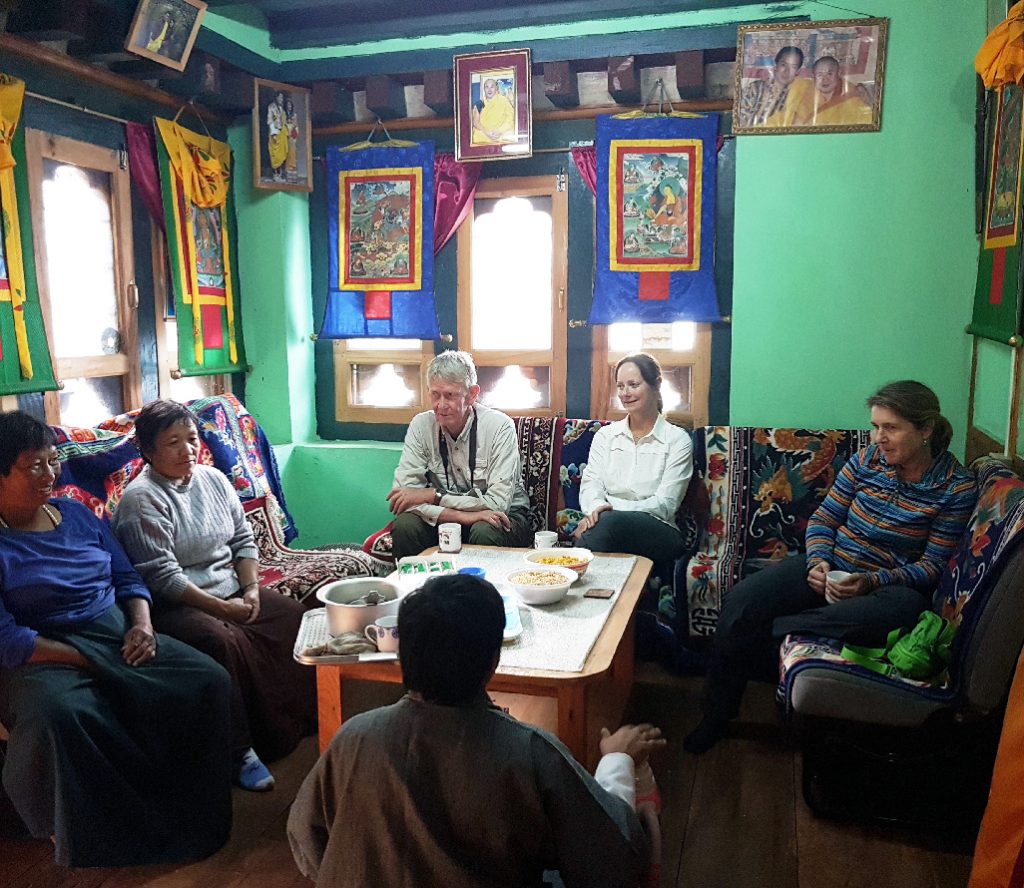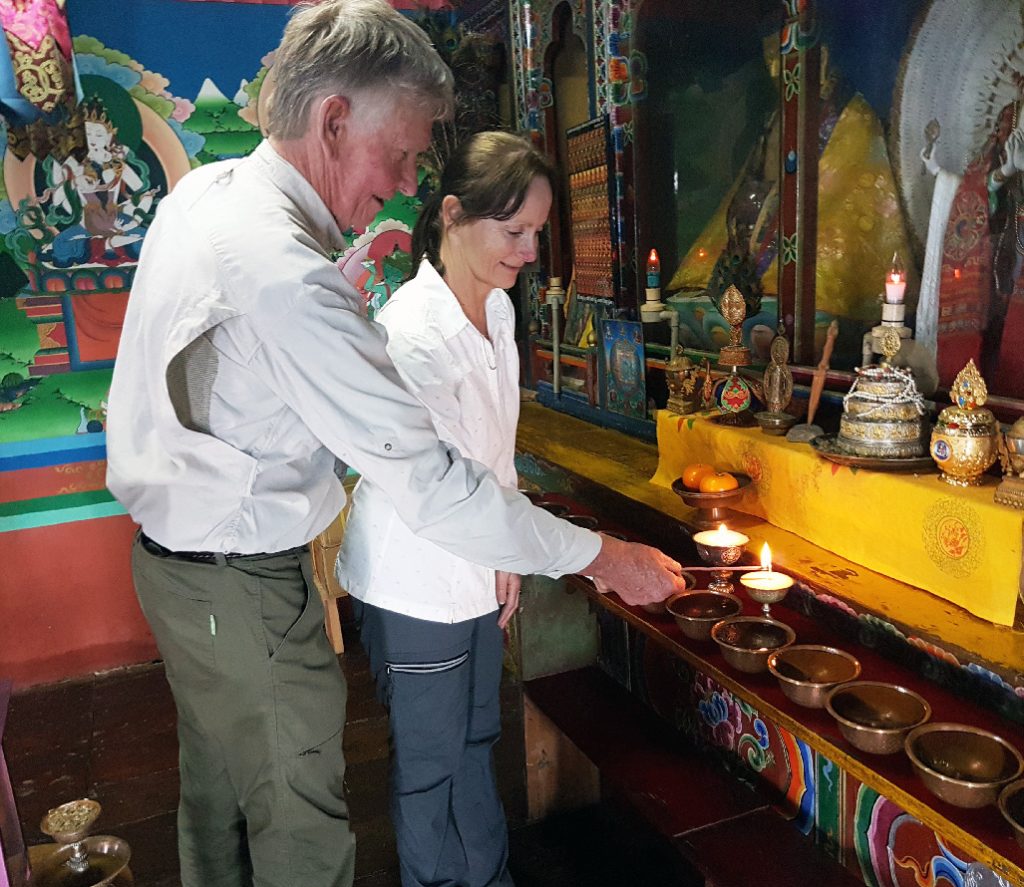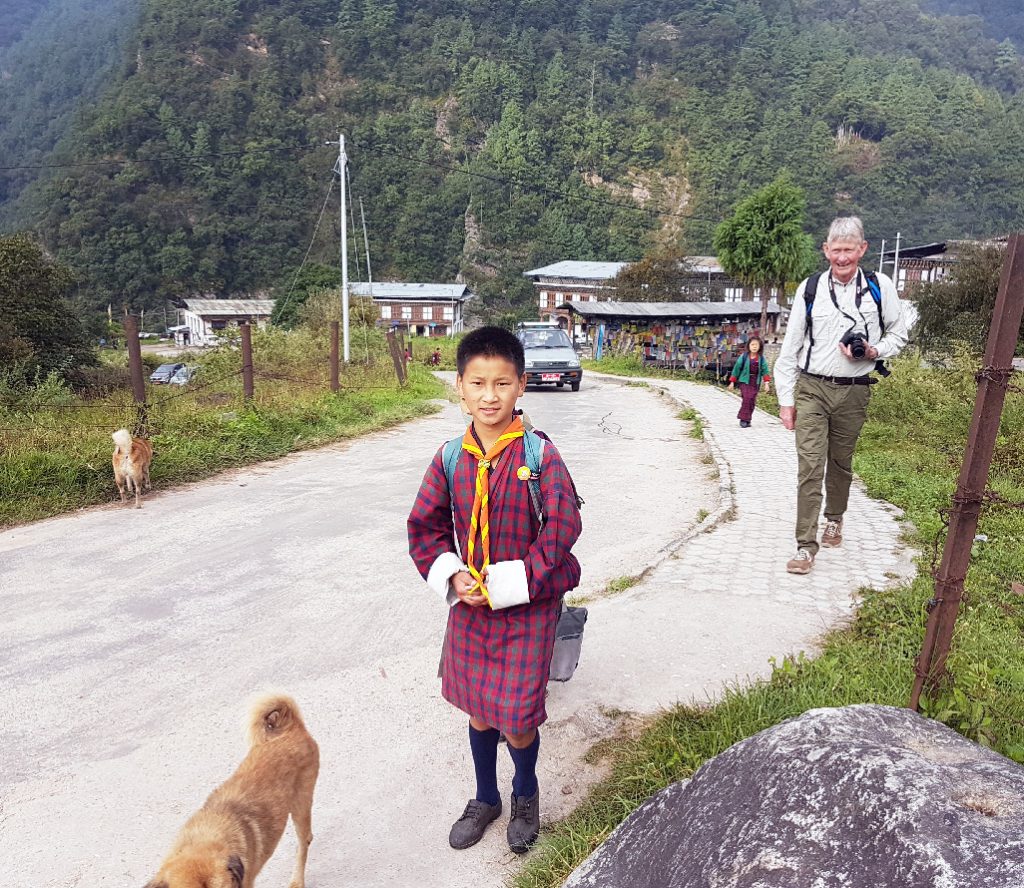Tour Date(s): 18 September 2025
- Start Date Status
- 18th September 2025Contact Hamish for updates
Share this tour:
Druk Yul – Land of the Thunder Dragon
Come with us, bring an open mind and learn why so many have been touched by Bhutan’s wild and gentle beauty.
As a travel destination Bhutan remains unique, sandwiched between its heavily industrialised neighbours, China and India. This isolated nation only opened up to foreign visits in 1974 and allowed TVs in 1999.
Bhutan is about the same size as Switzerland with just one tenth the population (approximately 780,000). It has had a slow path to development—the first road was only built in the 1960s.
Bhutan is the World’s Only Carbon-Negative Country.
Eastern Bhutan remains largely unexplored by tourists and is the most densely populated region of Bhutan. However, it is more remote than the other regions.
There are roads reaching the major towns but most settlements lay hidden in the steep hillsides of remote and isolated valleys.
One highlight of this region is that it is home to minority ethnic groups, some comprising less than 1000 people. Sharchops are the predominant ethnic group in Eastern Bhutan and they are followers of the Nyingma tradition of Buddhism. “You are the first foreigner we have seen in 22 years,” exclaims a surprised monk welcoming an American tourist to his mist-shrouded outpost near Mongar. (2017)
The rugged east of Bhutan sees far fewer tourists than the western regions, which is reason enough in itself to visit. Travellers venturing east will be rewarded with no crowds, fascinating and gentle local people, beautiful silks and embroidery, and other handicrafts , as well as lush, bird-filled forests.
The east is opening up to tourism but it remains a frontier for travel in Bhutan. If you want to get off the beaten track and stay in 3 to 4 star comfort, this is your place.
And of course we also visit the west of Bhutan which in itself is also very exciting and includes visits to the Chelela Pass (13,000ft) and the Tigers Nest monastery.
Tour Itinerary
NZ$14,995

Day 1 Day 1 - Singapore - Guawhati (India) flight - Samdrup Jongkhar (elevation 173m).
An early morning flight from Singapore takes us to Guawhati, India ,where our adventures begin. After checking in at the Druk Air counter at Changi Airport in Singapore we will meet as a group in the departure lounge one and a half hours before departure. We recommend group members arrive in Singapore by at least midday the day before departure.
Our flight arrives in Guawhati, India at 8:30am and after clearing Indian immigration we will be met by our Bhutanese guide and driver for the three hour journey to the border town of Samdrup Jongkhar where we overnight. There will be a chance to stretch the legs in this easy-going, low-lying border town this afternoon. A short tour orientation will be held this evening.
Day 2 Day 2 - Samdrup Jongkhar (173m) - Kanglung (1829m)
We depart Samdrup Jongkhar after breakfast for the 6-7 hour drive northwards into Eastern Bhutan. The drive climbs through thick vegetation passing by Deothang and many other small villages before a stop in Womrong for lunch. We continue on to the village Khaling (1829m) where we check out the national handloom weaving centre and then into the cooler environment of Kanglung for our overnight stop in this beautiful and tranquil area.
Day 3 Day 3 - Kanglung (1829m) - Trashigang
Today we explore around the towns of Kanglung and Trashigang.
Tonight we stay in Trashigang
Day 4 Day 4 - Trashigang (1070m) - Trashiyangste (1700m)
![]() Location: Trashiyangste
Location: Trashiyangste
Today we head northwards into one of the most remote valleys in Bhutan for a two night stay which gives us plenty of time to soak up and experience everything this incredible valley has to offer. We travel with a packed lunch andwill do some sight-seeing en-route into the valley.
The road into the valley makes for a bumpy ride but the destination is totally worth it. Gom Kora is one of the must-see places en route to Trashiyangste, a remarkably located temple brimming with legends and lore that our local guide will regale you with. Once we get to Trashiyangste we allow some free time to wander around this delightful town. In the early evening we walk down to Chorten Kora to witness and take part in the evening circumambulation with locals around this remarkable Buddhist stupa.
Day 5 Trashiyangste (1700m)
![]() Location: Trashiyangste
Location: Trashiyangste
We can sleep in a bit this morning, and then go over the options for the day. We will head up to visit the national craft college where students learn Bhutanese traditional arts (the BEST place to shop for locally-made crafts.)
Bumdeling Wildlife Sanctuary is located about an hour’s drive up the road for those who want to go for a one or two hour walk. Others may choose to stay back, and look around the town, visit a local school or just relax. Lots of options to choose from. Tonight we stay again in Tashiyangste.
Day 6 Trashiyangtse to Ramjar Village (2400) to Trashigang
![]() Location: Trashigang
Location: Trashigang
This morning we leave Trashiyangtse and retrace our journey back to Trashigang, approximately 3 to 4 hours of driving. We depart shortly after breakfast and drive to Gom Kora and then on to the hilltop village of Ramjar where we immerse ourselves in genuine Bhutanese rural life. The views from Ramjar are incredible looking out towards Arunchal Pradesh in India and northwards towards the Trashiyangtse Valley where we have spent the last two days.
We will disembark the bus for the 40 minute walk to our hosts home (non walking option is available). Here we have the opportunity to learn about the food and customs of the eastern rural Bhutanese people. Our lunch will be local fare and we even get the chance to make some ara (a corn-based alcoholic drink) and meet the locals. – Mid afternoon we drive to Trashigang where we stay overnight.
Day 7 Day 7 - Trashigang (1130m) to Lhuentse Valley (1800m)
![]() Location: Lhuentse
Location: Lhuentse
Today will be a driving day about 5-6 hours as we enter the magical Lhuentse valley renowned for its incredible weavers and culture.
Some of the most sought after and expensive fabrics in the country are made here using a technique more akin to embroidery than weaving.
We will spend two nights in Lhuentse in as guest house.
Day 8 Lhuentse Valley (1800m)
![]() Location: Lhuentse Valley
Location: Lhuentse Valley
Our destination today is the village of Khoma where many of the houses have traditional back strap looms set up on their porches. We take a packed lunch.
We stay again tonight in Lhuentse in a guest house.
Day 9 Lhuentse Valley (1800m) to Mongar (1600m)
Mongar is the fastest-developing dzongkhag (region) in eastern Bhutan. The road approaching Mongar is one of the most spectacular journeys in the country. It passes over sheer cliffs and through beautiful fir forests and green pastures.
There are countless varieties of rhododendrons here and on clear days you can even catch a glimpse of Gangkhar Puensum (7541 m), the world’s highest unclimbed mountain.
The Dzong in Mongar was built (1930), it was constructed the same way as all earlier dzongs, without plans or nails.
However, unlike the earlier dzongs, that are located in strategic positions, Mongar Dzong is located on a small gently sloping area just above the town. A visit to Mongar Dzong demonstrates how traditional Bhutanese architecture has continued to thrive through the centuries. Tonight we stay in Mongar.
Day 10 Mongar (1600m) to Bumthang (2580m)
![]() Location: Bumthang
Location: Bumthang
After breakfast we continue driving up towards the summit of the 3750m Thrumshing La Pass where we make a brief stop in the thin air and then onwards towards the Ura Valley and Jakar/Bumthang – one of the most important and historically significant places in Bhutan where we spend two nights. We should arrive into Bumthang mid afternoon in time for you to stretch your legs and check out the pool halls and quaint shops of this lively town.
We overnight in Bumthang
.
Day 11 Bumthang (2580m)
![]() Location: Bumthang
Location: Bumthang
After breakfast we head out for a morning of sightseeing around Bumthang which includes a visit to Jhampey Lhakang
(monastery), Kurjey Lhakang (monastery), the Jakar Dzong (fortress), the Swiss Cheese factory and the Red Panda Beer making facility. We get back to town in time for a late lunch, and those of you who want to try a traditional hot stone bath (extra cost), later this afternoon is the time to try this out.
We overnight in Bumthang
Day 12 Bumthang (2580m) – Punakha (1242m)
![]() Location: Punakha
Location: Punakha
We leave early for a big driving day that affords plenty of window sight-seeing opportunities. A stop at the Yartha shop outside Bumthang is a great place to buy some fabric souvenirs and on we go westwards past the incredible Trongsa Dzong (fortress) and in to the lower elevations of Punakha.
Our goal is to reach the quintessentially scenic Punakha Dzong (fortress) by 3:30-4pm to experience this iconic place during the magic hours of the late afternoon.
We overnight in Punakha
Day 13 Punakha (1242m) – Thimpu (2334m)
![]() Location: Punakha
Location: Punakha
Today we spend the whole day in and around Punakha and soak up the sightseeing highlights in this history rich part of Bhutan
We overnight again in Punakha
Day 14 Punakha (1242m) to Thimpu (2334m)
![]() Location: Haa
Location: Haa
Today we spend time in and around Punakha sightseeing before heading to Thimpu in late afternoon.The roads get noticeably busier as we near the Bhutan capital of Thimpu.
We stop at the scenic (and very popular!) Dochu La Pass and its 108 chortens (religious monuments) for tea, coffee and photos and then in to Thimpu city where after a wander around we stay the night.
Day 15 Thimpu (2334m) to Paro (2200m)
![]() Location: Paro
Location: Paro
This morning we attend the famous Thimpu festival We then drive to Paro. We arrive in time for a leisurely stroll down the main street and its abundance of shops. We then drive to our four star resort which will be your home for two nights.
Tonight we prepare for the amazing hike tomorrow to the iconic Tigers Nest Monastery!
Day 16 Paro (2200m)
![]() Location: Paro
Location: Paro
Today we walk to the world famous Tiger’s Nest Monastry (optional walk). We head off shortly after breakfast for the short drive to the trail head followed by a walk to this iconic temple that clings to the cliffside. Its all uphill but there is an option of a pony ride to the tea house which is located about two thirds of the way up. (extra cost)
We then head back to Paro for lunch and some last minute shopping and then back to our amazing hotel to celebrate the end of our journey traversing this extraordinary country with a final dinner.
Day 17 Paro (2200m) to Singapore
Our return flight to Singapore departs mid morning so it’s an early wakeup for the short drive to the airport and on to Singapore. We recommend you book your connecting flight for the following day and overnight in Singapore. You arrive in Singapore at 4pm
Please note that this itinerary is subject to change based on local conditions and festival schedules. Tuatara Tours and your experienced guide will ensure that you have the most enriching and enjoyable experience throughout your journey in Bhutan.
Gallery
What’s Included
Accommodation
We stay in modern 3 to 4 star hotels or resorts all the way.
Hotels in Bhutan are of a good standard and are comparable with hotels in more developed western countries. They are clean and tidy with modern facilities throughout. Rooms are double/ twin with ensuite facilities.
All rooms have coffee and tea making facilities. You will receive more comprehensive details of the accommodation on your tour at time of booking. Your pre and post tour accommodation in Singapore is not included in the tour cost.
An experienced guide
You will be accompanied by a New Zealand guide (host) who is experienced in travel to Bhutan. Your host will be with you from the time you leave Singapore until you arrive back in Singapore where your tour will end.
We will also have a fully accredited Bhutanese, English speaking guide for the duration of the tour. Our guide is very well versed and qualified to comment on all that is Bhutanese. Our driver is also accredited by the Bhutanese government.
Food
All meals are included in the cost of your trip in Bhutan. Generally meals will be buffet style and taken in your hotel or guesthouse. Breakfast, lunches and dinners will generally include a selection of western, Chinese or Indian style dishes, with some local specialties on occasion.
Don’t forget to try the national dishes of emma datshe (chilli and cheese) and delicious red rice. Rice and vegetable dishes are always present for every meal. Vegetarians are well catered for and meat is the exception rather than the rule with most meals. Alcoholic drinks are not included with meals and are paid for separately. Filtered or bottled water is usually freely available in most hotels, restaurants and in the vehicle you will be travelling in.
Each meal will typically have three or four dishes to share. Choices are limited and feedback has suggested that the food isn’t the main reason to visit Bhutan. Meals may become a little monotonous with similar offerings at a lot of the restaurants. Please don’t be offended that your guide and driver do not eat with you. This is the custom in Bhutan and guides and drivers generally eat together in another section of the restaurant.
Transport
All transport including your return flights from Singapore to Bhutan are included in the cost of the tour. On arrival in Paro we will be met by our Bhutanese Government accredited guide and driver. You will be travelling in a well appointed small bus with very comfortable seating.
Whilst there are approximately 8000km of roads in Bhutan, the quality varies greatly depending on proximity to the major towns of Thimpu and Paro. As such, even short distances can take longer than expected. Bhutan is currently upgrading a lot of their road network and delays are common. Roads are narrow and speeds are slow.
Visas
You will require a visa for Bhutan. Please talk to us at the time of booking as we arrange your Bhutan visa which is included in the tour cost.
Entry & Sustainable Development Fees
All entry fees to monasteries and other attractions when accompanied by our local guide.



